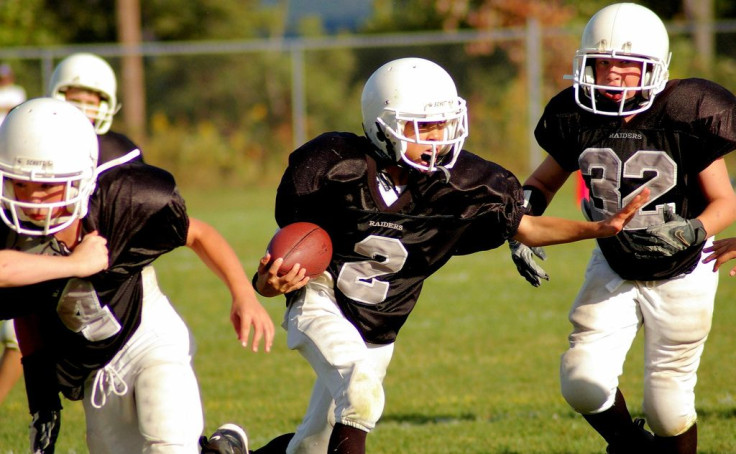High School Football Players Go To Hospital With 'Mysterious' Brain Injuries: The Long-Term Effects Of TBI On Teens

Two California high school boys were hospitalized Monday after a routine football game, both with brain injuries. The students, who were on the Union Mine High School junior varsity team, began acting weird and fatigued after the game — then collapsed shortly after.
One of the players, Justin Schwartz, was released from the hospital with a grade 3 concussion and a nerve injury in his neck, but Nick Brown remains in critical condition due to a “high impact blow to the head that caused a subdural brain bleed,” his family said in a statement.
Though some are speculating that Adderall use might have contributed to the accident, the hospitalizations remain a "mystery," according to media outlets. In line with the Adderall narrative, another 17-year-old Union Mine High School student was arrested after being charged with possession and distribution of the drug. Adderall use increases blood pressure and heart rate, but it's not certain whether the drug exacerbated the brain injury.
That being said, these “mysterious” hospitalizations don’t appear to be that mysterious at all. They’re the result of blunt trauma to the head, which can cause concussions, brain bleeding, and far worse scenarios down the line.
Sadly, traumatic brain injuries (TBI) in contact sports like football, hockey, and lacrosse are more common than you might imagine. Many times, subtle brain injuries that occur at a young age are written off as concussions — but they prove to be far more serious later in life, leading to chronic traumatic encephalopathy (CTE). CTE is a progressive degenerative brain disorder in which a former athlete — typically boxers or football players — experiences memory loss, impulsivity, aggression, depression, and an increased risk of dementia or Alzheimer’s.
Concussions are often written off as no big deal; in machismo games like football, injured players are seen as a liability rather than a kid who could be increasing his risk of Alzheimer’s, depression, a plummeting IQ, and suicidal thoughts exponentially. In football, coaches are very much like CEOs of a corporation looking to win — and players are employees, easily replaceable if they slip up. That’s why many concussions or injuries go underreported in the sport, especially among young athletes who want to give their all to get to the top.
The National Center for Injury Prevention notes that 47 percent of high school football players are diagnosed with a concussion every season — but the true number of concussions is likely twice that amount. Concussions, especially repeated multiple ones that don’t give the first ones a chance to heal, damage the white matter of the brain over time, ultimately resulting in impaired cognitive function, severe depression, suicidal thoughts, and other issues. Long-term head trauma could lead to CTE and ultimately early death. According to PBS, some 76 of 79 NFL players who had donated their brains after death were found to have CTE.
Journey Bailey, a student who suffered brain bleeding after a traumatic brain injury and nearly died, wrote an article in The Huffington Post to detail his experience and to warn other young people about the dangers of contact sports, particularly football.
“I wanted to write this article for my many friends who are playing football in college right now, and to the younger athletes out there playing high school and youth football,” Bailey wrote. “This is the article I wish I could have read back when I was in your shoes; back when I still had a chance to become the person I wanted to be.”
ABC Breaking News


























